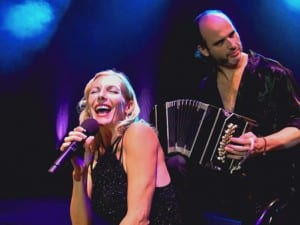With a career spanning more than 40 years, Susan Hiller is one of the most influential artists of her generation. Expanding the boundaries between different media, American-born Hiller now resides in the UK. Her work appears in a group exhibition, Slow Learner, at Timothy Taylor Gallery, 1-29 August. www.timothytaylorgallery.com.
Your work is part of the group show Slow Learner at Timothy Taylor Gallery this summer. What can audiences expect to see?
The gallery is showing an early automatic writing experiment of mine called So Don’t Let it Frighten (1975-1981). At that time in my practice, I would simply pick up a pencil and start making marks on sheets of paper, in many ways, like I was possessed or in some kind of a trance. They looked like childish scrawls at first but then I started to notice recognisable words, which was really interesting for me. The smaller section of the piece is a subsequent attempt to decipher and understand the main drawing experiment. However, it is actually a critique or investigation into our natural desire to find meaning in, or understand, everything. This work was featured in my Tate Britain retrospective (February – May 2010). As to what an audience would expect to see, I hope they come without too many expectations, because each of my works is different and I want them to make their own discoveries.
Slow Learner seeks to examine the gap between reading art and comprehension. Please tell us more about how do you do this?
This is a question of who, or what, you believe in; it has to do with faith, and, of course, much of abstract expressionist work can be traced back to surrealist interest in automatic writing and drawing, which was a fascination at the time. Magic Lantern, a work I made in the late 1980s, similarly deals with one’s shifting comprehension of objectivity/subjectivity. The juxtaposition of audio and visual components in this piece highlights the paradox of the machine, which is both a scientific instrument, designed to document objectively, and also a means by which the occult and the other-worldly may be revealed. It also explores the body’s instinctive response to colour.
You are exhibiting amongst an array of other artists. Has their work influenced your output at all over the years?
I created a series of works that were made as homage to Marcel Broodthaers. The inspiration comes from his book and film Un Voyage en Mer du Nord (A Voyage on the North Sea) (1973-1974). I have reframed Broodthaers’s motifs of maritime paintings and photographs with reference to my own “rough sea” works, which began with Dedicated to the Unknown in 1972 and continued until 1976. This was a series of photographs, which consists of 14 panels and features 300 original postcards depicting waves crashing, that I collected and made pseudo-scientific analysis of, which is now owned by Tate.
What is your reason for frequently using automatic writing?
I was actually a painter first of all – that was after I abandoned anthropology, so I am interested in the formal aspect of the graphic mark, perhaps even the decorative elements. I have also used automatic writing to make photographic works, which adds a further pictorial depth and interrupts the easy or direct reading we might expect from photography.
How do you want audiences to respond to your exhibitions?
Maybe they will encourage people to question what they read, see and are told. People get complacent and somehow they don’t mind being fed so-called “information”. They get lazy in terms of what they accept, and I believe art should sometimes provide some kind of an intellectual work out. Not always, but sometimes and more often would be nice.
You studied film and photography rather than fine art. How has this enhanced and directed your practice?
Since the epoch of 1960s conceptualism I have felt that there is a redundancy in the idea of media specificity. My output has always been varied yet the market tends to demand delineation between mediums. I work in a variety of media: painting, installation, photography, film, sound, sculpture. I find that the art always dictates the medium that is used.
What do you have planned for the future?
I have various solo and group projects on display at the moment. Currently, I have an exhibition called Resounding, which is on at Summerhall, Edinburgh until the end of September and is part of the Edinburgh Art Festival, and I also have a show on at The Model in Sligo, Ireland, which continues until 28 September. It has been a busy year for me and this autumn, I will also have work included in a diverse range of exhibitions in the Netherlands, UK and France. These include shows opening at de Appel Arts Centre, Amsterdam; Hayward Gallery, London; Tate Liverpool; and finally, Les Abattoirs, Toulouse.





